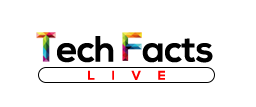Google today announced Project Bloks, a new open hardware platform for researchers, developers, designers and educators to build physical coding programs for teaching kids (aged above 5 years) to code.
Google collaborated with a design firm IDEO with the aim to build a platform which helps to build their own devices. Only the basics of the platform are provided by the giant. The team lead, Jayne Goldstein and tech lead Joao Wilbert in a statement said, “Right now Google has no plans to get into the toy industry.”
Google Research and Education teams, IDEO and Paulo Blikstein, the Director of the Transformative Learning Technologies Lab at Stanford University are associated with Goldstein and Wilbert to make this project success. They also say Google will not release its own retail units.
The three core components that make up the Project Bloks system are “Brain Board”, “Base Boards” and “Pucks.” These 3 components are connected together to build a set of instructions that can be sent to connected devices like toys or tablets over Bluetooth or Wi-Fi.
Xiaomi Mi Bunny Kids Smart Watch Released! Price ¥299! :children’s Bodyguard
Brain Board acts as the central processing unit for the system which has speakers and provides power to the system. The Brain Board then talks to other components Pucks and Base Board that jointly make up the physical programming language of Project Bloks.
The Project Bloks team explains that Pucks provide basic commands like “turn on or off,” “move left,” “turn 180 degrees,” etc. They mostly resemble the dials, buttons and switches.
Then the instructions or commands from the Pucks are passed to the Brain Board by Base Board. Base Board packs haptic motors and an LED so users can get real-time feedback. The Base Board can also be used to play audio on the Brain Boards.
Japanese “3D-Printing Soap Suds Pen” Is Now Available For $42
Google on the project website claimed that it wants “to enable kids to develop computational thinking from a young age through coding experiences that are playful, tactile, and collaborative.”
“Imagine what could happen if we had 10 times more people developing ways for children to learn coding and computational thinking: not just the traditional way, but kids that would teach programming in different ways such as making music or controlling the physical world,” said Paulo Blikstein in a statement. “That is what this platform will enable: make it easy to think outside of the box, without all the technical obstacles.”
Children learn all about game creation with Nintendo and local library
Right now, Google is looking for educators, researchers, developers and parents who would like to participate in its research studies later this year.






![Top 10 Popular iGaming Sites in India [Jan 2021] Indian Casino Sites of 2020](../../wp-content/uploads/casino-2-100x70.jpg)
